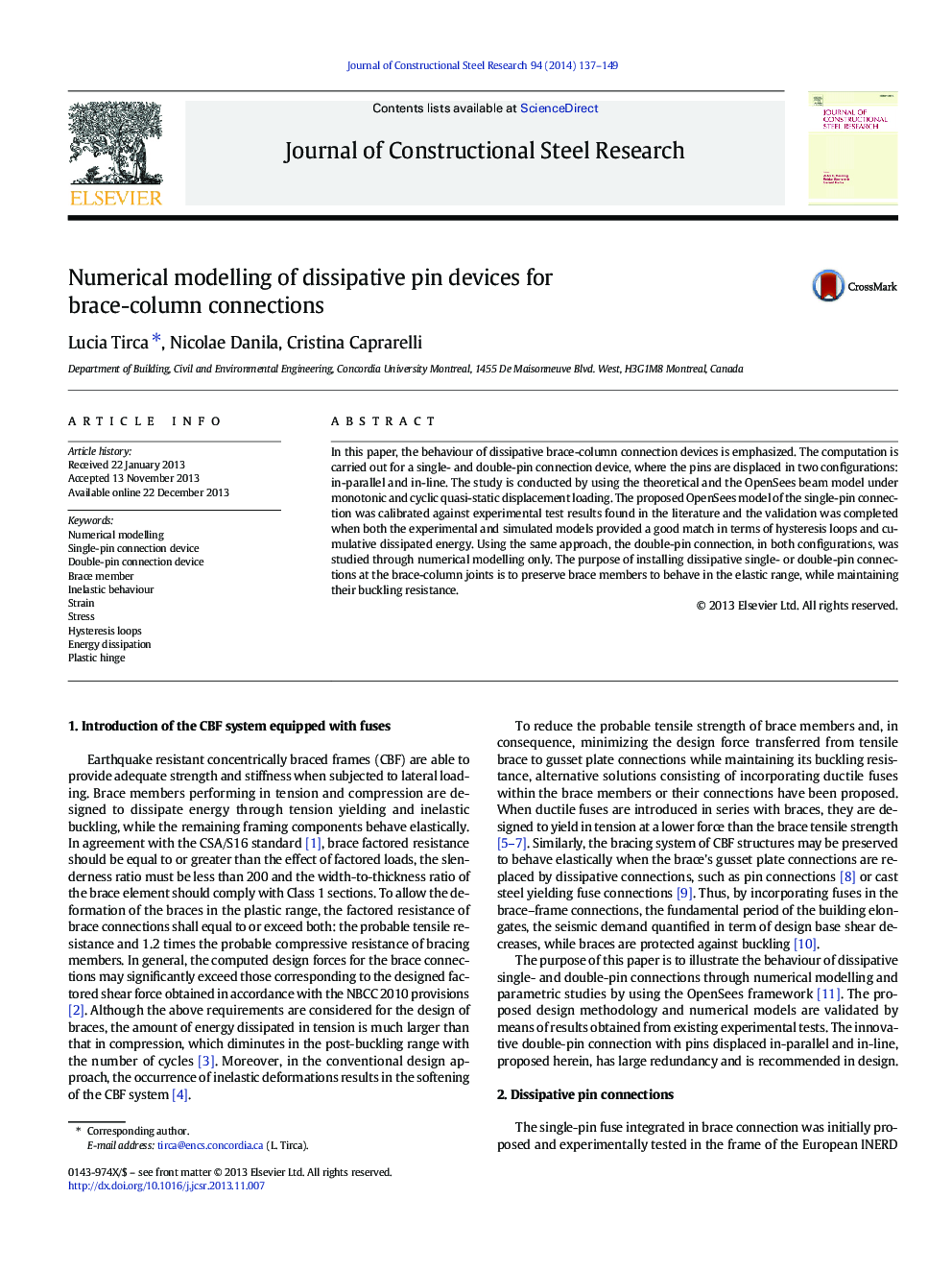| Article ID | Journal | Published Year | Pages | File Type |
|---|---|---|---|---|
| 284760 | Journal of Constructional Steel Research | 2014 | 13 Pages |
•Single-pin and double-pin dissipative connections preserve braces against buckling.•The energy dissipation capacity of pins increases with distance between inner-plates.•The length and thickness of outer-plates influence the behaviour of pin connections.•A double-pin device with pins displaced in-parallel and in-line is proposed.•The double-pin connection device with pins in-line has large redundancy.
In this paper, the behaviour of dissipative brace-column connection devices is emphasized. The computation is carried out for a single- and double-pin connection device, where the pins are displaced in two configurations: in-parallel and in-line. The study is conducted by using the theoretical and the OpenSees beam model under monotonic and cyclic quasi-static displacement loading. The proposed OpenSees model of the single-pin connection was calibrated against experimental test results found in the literature and the validation was completed when both the experimental and simulated models provided a good match in terms of hysteresis loops and cumulative dissipated energy. Using the same approach, the double-pin connection, in both configurations, was studied through numerical modelling only. The purpose of installing dissipative single- or double-pin connections at the brace-column joints is to preserve brace members to behave in the elastic range, while maintaining their buckling resistance.
